Visiting the Khon Kaen National Museum in central Isaan, Thailand, implements an interesting look into yesteryear.
Archaeology museums give a glimpse into the past by way of time travel. Why not engage the mind in a museum?
That was my impromptu mantra when noticing this place of cultural preservation on a map.
Before entering the building, you get a view of the steep-sloping roofs and unique window design at the top.
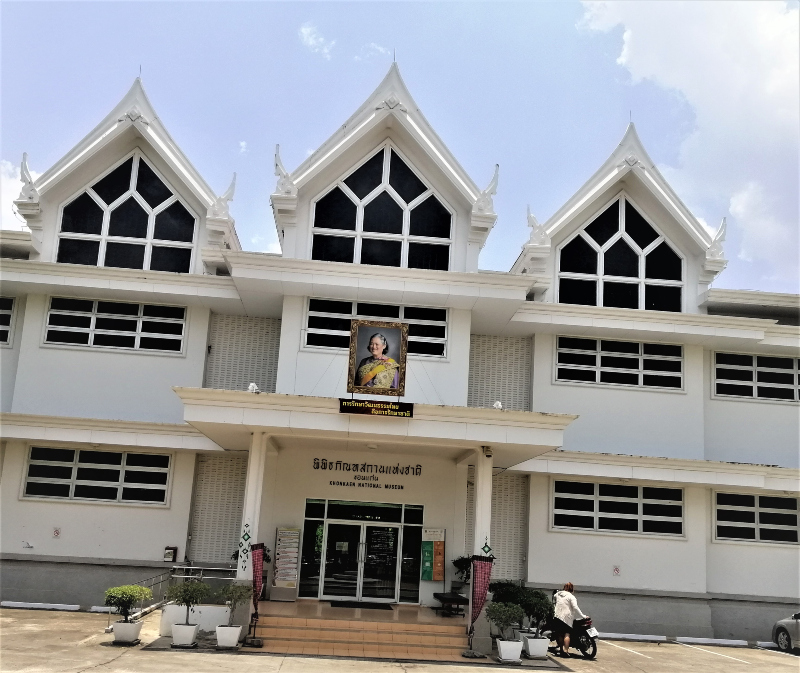
I like to gaze at a museum’s architecture before entering and after leaving.
After some architectural admiration, go inside and pay 100 Baht ($3), to enter. If you’re Thai, it’s 20 Baht. This is a 500% difference. While at Zaculeu in Guatemala, the fee for foreigners was 1,000% more. Remembering that reminded me to embrace an optimistic stance.
I had to be OK with adding $3 to my daily expenditures for the opportunity to exercise my brain in a new and unique cultural space.
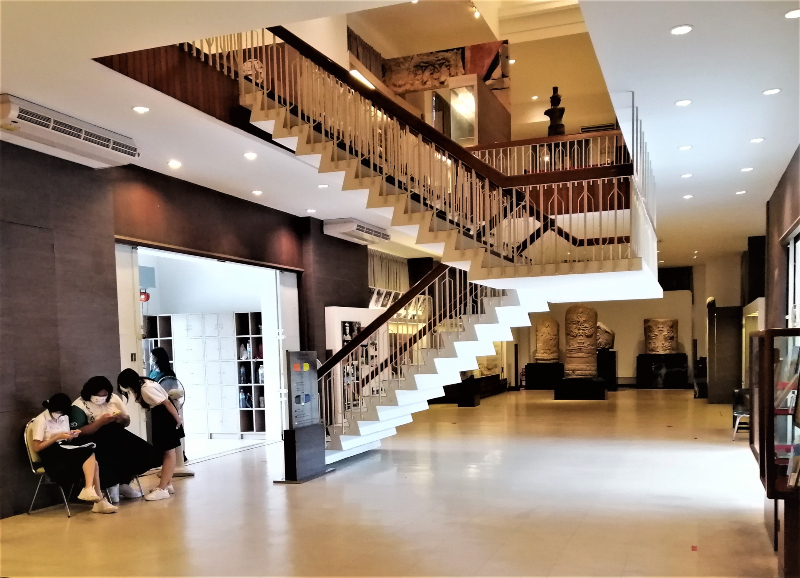
Here on the bottom floor, I noticed I had the whole museum to myself. It was 11:00 a.m. At first I thought the three schoolgirls were visitors too, but then I imagined they were there as part of a work-study program.
I thought:
What a great way to get students into the community. Museum exposure and any form of work experience is positive. Museum involvement has to look solid on their resumés, too.
As three of them appear virtually-glued to two phones, this is hardly out of the ordinary. While taking notice, I thought about how much time I spend on my laptop . . . too much . . . no doubt.
On the ground floor, behind where the previous photo was taken, is this geographical depiction that divides Thailand’s 77 provinces.

For the protection of its cultural heritage, the clean and organized museum is dedicated to Thailand’s northeastern Isaan region, (in light green cyan) . The rest of oddly-shaped Thailand and the isthmus it shares with Myanmar and Malaysia, is in brown.
The Isaan region makes up a big chunk of the country with 20 of its 77 provinces.
Boundary Stones
Paraphrased from what's written in the museum: Boundary stones are widespread along the main rivers of the northeast. They were probably developed through ancestral beliefs for their traditional places of worship. After Buddhism had spread throughout the region, these huge, engraved rocks were used for specifying sacred areas, representing a stupa and utilized for decoration.

These intricate rock-art carvings are on the left side of the ground floor.
There’s a small, nicely decorated courtyard outside, where more of these massive ancient stones are arranged.
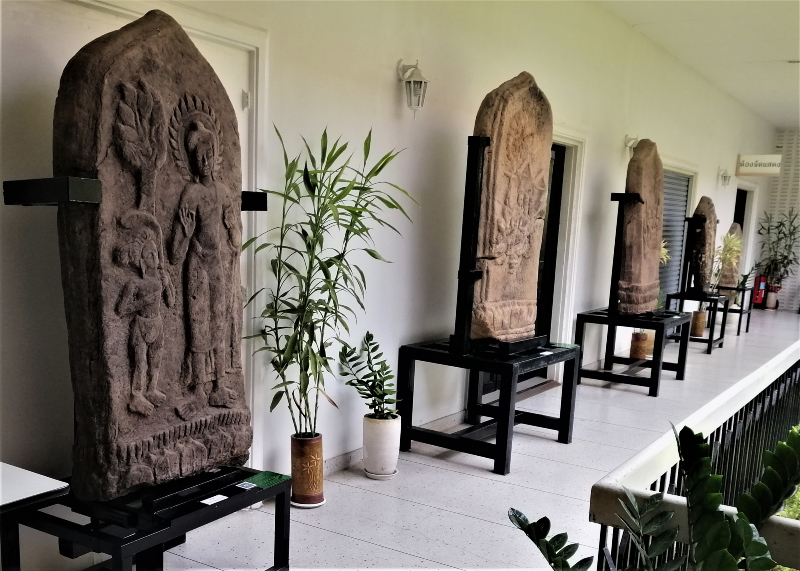
Upstairs, ancient tools, pottery and other artifacts are found, but what struck me most, was the skeleton.

Paraphrased from what's written in the museum: The adult male was knee-tied and buried with two pottery vessels above his head, a tiger-toothed bead and a green-glassed bead on his neck, and three more pottery vessels at his feet.
The description doesn’t mention when this prehistoric man was thought to have lived.
The words below the following rock-art painting tell us why.
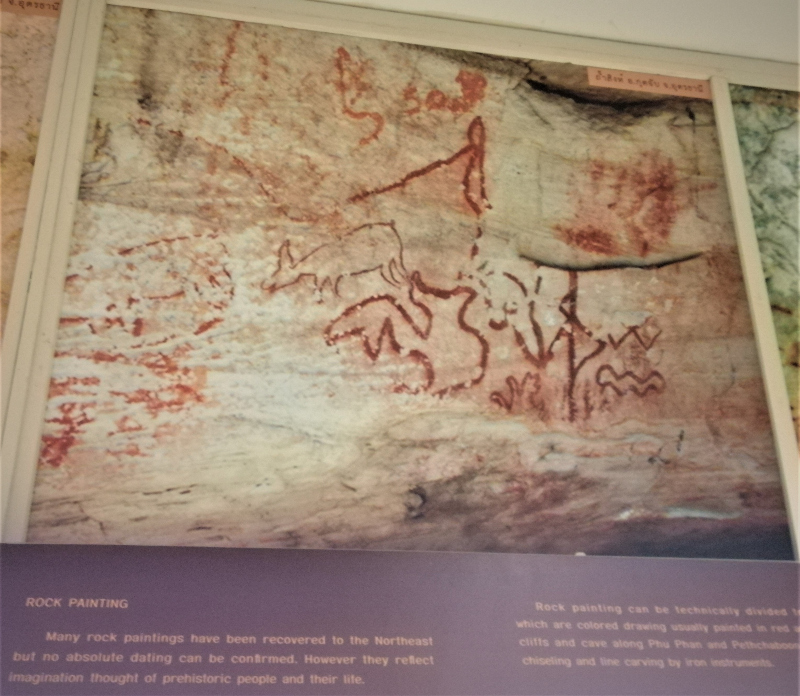
Left side of text retyped for clarity: Many rock paintings have been recovered in the northeast, but no absolute dating can be confirmed. Regardless, they reflect imaginative thought of prehistoric people and their lives.
I like how they’re honest about not assuming dates, since, we can’t really know.
What I Liked About the Establishment
There’s text describing most of the displays in both Thai and English. The English isn’t perfect, but it’s readable. This was a boon.
The museum isn’t big. You could easily be in and out in 20 minutes. I spent about an hour reading the explanations, taking a few notes and snapping a few photos.
I like small museums, as hours in a museum can cause burnout. Time-variety balance is key.

When I was about to leave at noon, I noticed five others had arrived, three of whom were admiring the huge, centered boundary stone.
Doing something touristy in a non-touristy locale can provide a nice feeling. If I’d been in a famous museum crowded with people, I wouldn’t have enjoyed it the way I did this relatively unknown national Museum.
Visiting an establishment dedicated to culture/archaeology can be an enthralling way to learn about a region.
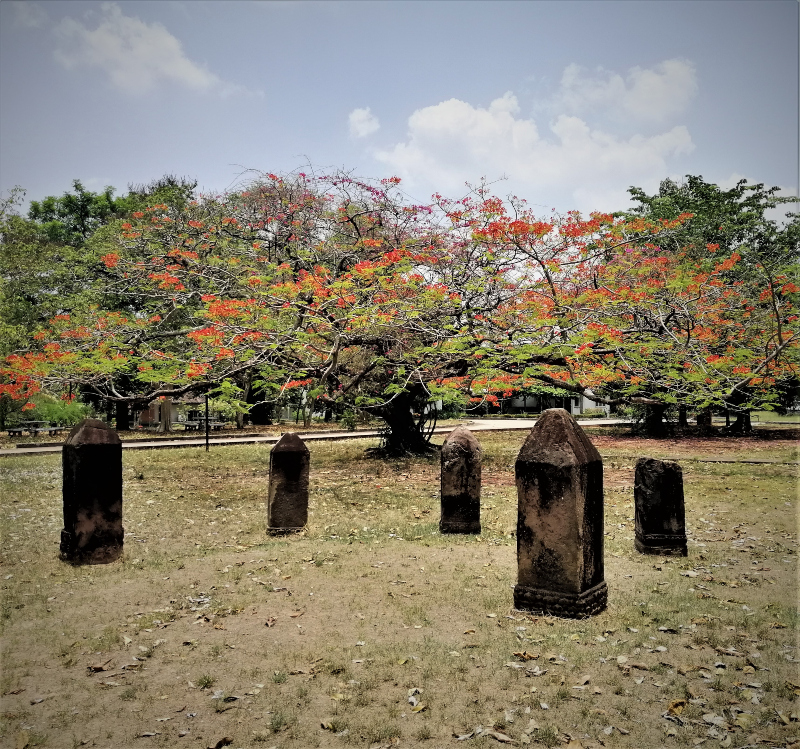
On the way in or out, a stroll in the natural outdoor surroundings with more archaic tall rocks is typically a good idea. But, I didn’t last long as the heat was coming on.
I thought it better to conserve energy to endure what would be a sweaty, 45-minute urban walk back. This is the reality during Thailand’s scorchingly-hot, pre-monsoon summer.
How to get to the Khon Kaen National Museum
Fortunately, the walk is flat with mostly generous sidewalk space. Just keep in mind that temperatures can rise over 100° F (38° C) by the early afternoon.
Nose-only breathing helped increase energy levels, making the walk easier, while sticking to the shady side of a road helps conserve energy and alleviate the feeling a pounding-hot sun can induce.
If you’re going in the summer, and having your clothes imminently wet with sweat turns you off, take a tuk tuk or taxi. They’re easy to wave down. Know your fare before getting in unless the taxi driver is using his meter.
In addition, Grab motorcycle drivers are available and cheaper. You can order, flag one down or walk up to one, as they’re ubiquitous to urban Thailand.
If you use private transportation, it's a good idea to have the following to show the driver: พิพิธภัณฑสถานแห่งชาติ ขอนแก่น - ถ.หลังสวนราชการ ต.ในเมือง - The Khon Kaen National Museum - Lang Sun Ratchakan Rd, Tambon Nai Mueang.
Your map app will show the straightforward walking route.
The museum is open from 9:00 a.m. to 4:00 p.m, Wednesday through Sunday. It’s closed on Mondays, Tuesdays and national holidays.
Have you been to any small museums off the beaten path? Leave a message below or comment on Facebook.
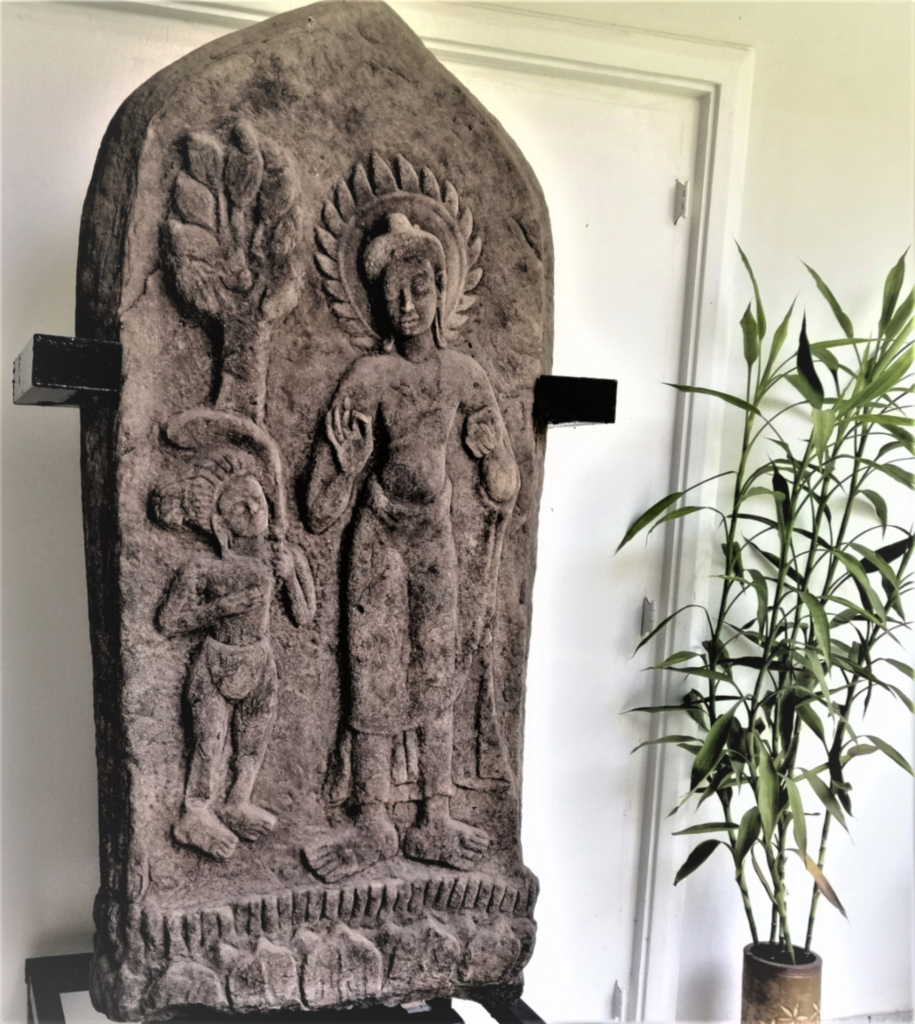

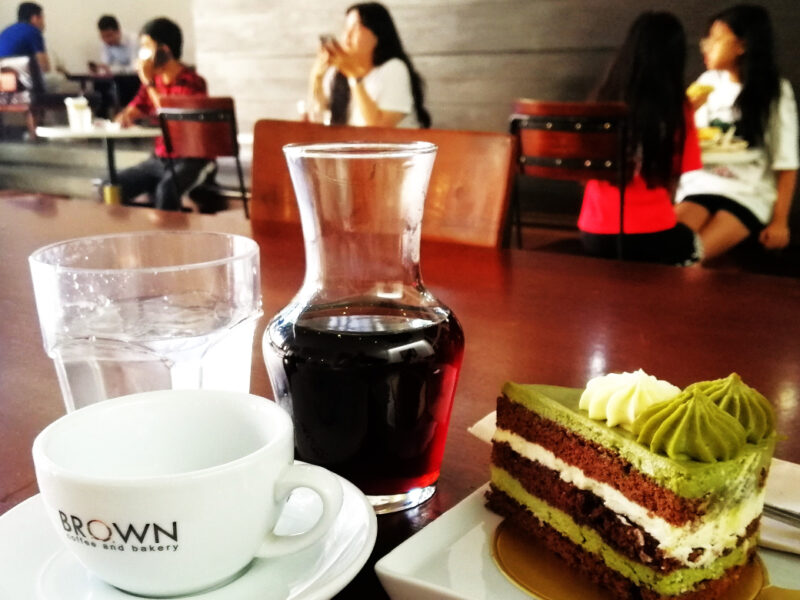
Me and my little boy enjoy reading about your adventures!
Thanks TREVOR, great that you guys are checking it out together. I imagine you’re getting him tuned in to English dipthongs. Through your guidance during these ultra-formative years, he’s gonna be genius-like and ready for an increasingly digital and multilingual world. Excellent work!
That was interesting!
Thanks MAMA, I’m glad you liked it. I found the museum interesting, too.